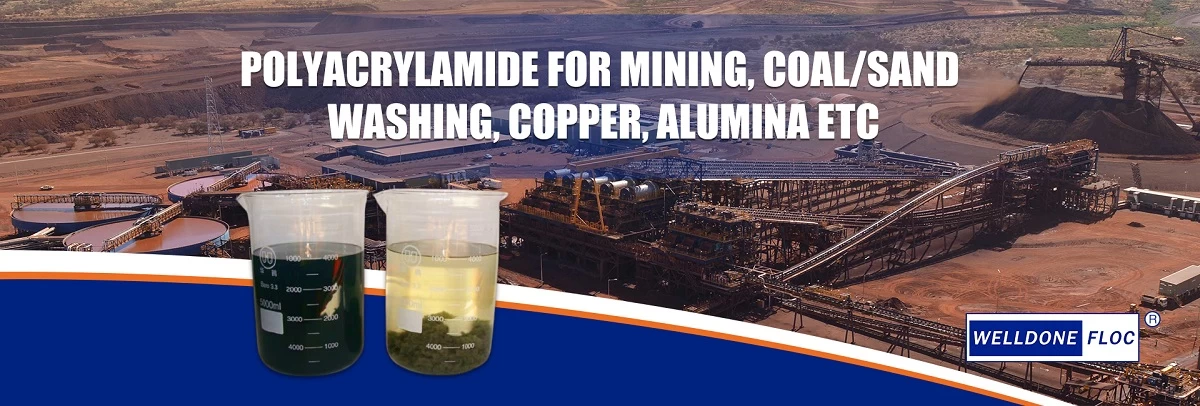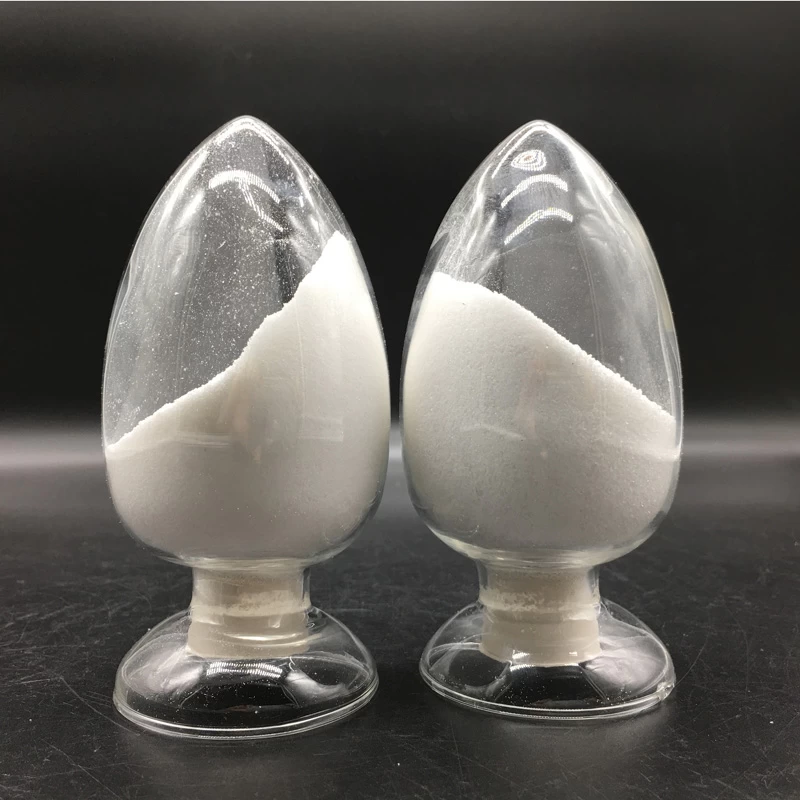Commonly used fluid loss additives Part.2
3. Resin fluid loss reducer 1) Sulfomethyl phenolic resin SMP and sP are both the product codes of sulphomethyl phenolic resin, and their synthetic routes are slightly different. The synthesis of SMP is to first react formaldehyde with phenol under acidic conditions (pH=3~4) to generate a novolac resin with appropriate relative molecular mass, and then add sulfomethylation reagent under alkaline conditions for sulfomethyl reaction . Properly controlling the reaction conditions can obtain products with a higher degree of sulfonation and a larger relative molecular mass. The reaction is as follows: OHOH nozzle t support printing + N shed 03 denier cH2 ten jnc core sojNasP synthesis is to feed phenol and formaldehyde, sodium sulfite or sodium bisulfite at one time, under alkaline conditions, while condensing and sulfomethylation to produce Sulfomethyl phenolic resin. Sulfomethyl phenolic resin is a water-soluble irregular linear polymer, the molecular structure is mainly composed of benzene ring, methylene bridge and c-s bond. The phenolic hydroxyl group in the molecule is an adsorption group, and the sulfomethyl group is a hydrophilic group. Its salt resistance and thermal stability are very strong, and its temperature resistance can reach 200-2200C. 2) Sulfonated lignin sulfomethyl phenolic resin condensate Sulfonated lignin sulfomethyl phenolic resin condensate (SLSP) is a water-soluble linear polymer copolymer. Its preparation is completed in two steps. First, under alkaline catalysis, phenol, formaldehyde and sodium bisulfite undergo condensation reactions to generate sulfomethyl phenolic resin. Then it is heated and refluxed for dehydration and condensation with sulfonated lignin (pulp waste liquid) in the presence of formaldehyde solution and sodium hydroxide, and the SLSP product can be obtained after drying. SLSP has good thermal stability, strong salt and calcium resistance. The drilling fluid treated with SLSP has a temperature range of 150-180. After C high temperature, the fluid loss does not change much. Because its molecule contains a large number of sulfonic acid groups, it is not easy to produce dehydration and salting out when it encounters a large amount of sodium, calcium or magnesium ions. The SLSP molecular chain contains adsorption groups such as hydroxyl, which can carry out hydrogen bond adsorption with oxygen on the clay particles. The sulfonic acid group can thicken the solvated water film on the surface of the clay particles and increase the f potential, thereby improving the coalescence stability of the clay particles. Due to the role of SLSP to stabilize colloidal particles, it can increase the viscosity of the drilling fluid, thereby reducing fluid loss. 3) Sulfonated lignite resin The commercial name of sulfonated lignite resin is Resinex, which is composed of 50% sulfonated lignite and 50% sulfomethyl phenolic resin. The product is easily soluble in water and can be used in various water-based drilling fluids with pH=7-14. It is a filtrate reducer with salt and temperature resistance. The temperature resistance can reach 230 in brine drilling fluid. C, the salt resistance can reach up to 1.1×105mg/L; in the case of calcium content of 2000mg/L, the drilling fluid performance can still be kept stable. While reducing fluid loss, it does not increase the viscosity of the drilling fluid, especially in high-density drilling fluids to achieve the control of fluid loss without increasing the viscosity of the drilling fluid. The drilling fluid filter cake treated with sulfonated lignite resin has extremely low permeability, which is beneficial for stabilizing the borehole wall, preventing sticking and not blocking oil and gas reservoirs.
4. Modified starches Modified starches such as carboxymethyl starch, hydroxyethyl starch, and hydroxypropyl starch occupy an important position in drilling fluid treatment agents, and their dosage is second only to iron chromium salts and lignite products, ranking third. Carboxymethyl starch is based on pregelatinized starch, further reacted with etherifying agent chloroacetic acid, and then washed, dehydrated, dried, crushed and sieved; hydroxyethyl starch is based on pregelatinized starch , It is produced by reaction with chloroethanol or ethylene oxide; Hydroxypropyl starch is made by reaction with propylene oxide on the basis of pregelatinized starch. Their structure is as follows: oH Torr (Hydroxyethyl Starch) (Hydroxypropyl Starch) The fluid loss reduction mechanism of modified starch is similar to that of sodium carboxymethyl cellulose, because the molecule contains a large amount of hydroxyl, Glycoside bonds and ether bonds, they can hydrogen bond adsorption with the oxygen or hydroxyl on the clay particles; the strong hydration group can thicken the solvation film on the surface of the clay particles and increase the f potential; the starch molecular chain has a helical structure And the relative molecular weight is relatively high, it can adsorb multiple clay particles to form a space grid structure, and it is also beneficial to improve its coalescence stability; the modified starch has strong viscosity-increasing performance, which can increase the viscosity of free water in the drilling fluid and reduce filtration. Because of the percolation effect of the cake, the modified starch can greatly reduce the fluid loss after being added to the drilling fluid.
5. Acrylamide-based polymer Acrylamide-based polymer is a general term for a type of copolymer containing acrylamide (AM) links in the molecule. 1) Hydrolyzed polyacrylonitrile Polyacrylonitrile is a polymer compound formed by the polymerization of acrylonitrile, commonly known as acrylic. Hydrolyzed polyacrylonitrile (HPAN) is a product obtained by hydrolyzing waste silk from acrylic fiber production as a raw material with alkali. The structure is as follows: -(-CH2--CH specialization cH2--CH to seven CH2--CH--) 7lIlCOONaCONH2CN (hydrolyzed polyacrylonitrile) hydrolyzed polyacrylonitrile can be regarded as a terpolymer of sodium acrylate, acrylamide and acrylonitrile in structure. The nitrile group and amide group on the molecular chain are the adsorption groups, and the sodium carboxyl group is the hydration group. The unhydrolyzed nitrile groups can be hydrolyzed into amide groups or sodium carboxyl groups under high temperature and alkaline conditions at the bottom of the well, thus alleviating the effect of high temperature downhole on the entire molecular chain, and thus can improve its temperature resistance. The performance of hydrolyzed polyacrylonitrile in the treatment of drilling fluid is mainly determined by its relative molecular weight and degree of hydrolysis. HPAN with a higher molecular weight has a stronger ability to reduce fluid loss and increase the viscosity of the drilling fluid; HPAN with a lower molecular weight has a weaker fluid loss reduction ability, and its viscosity increasing effect is not obvious. Hydrolyzed polyacrylonitrile can withstand 240-250. C high temperature, salt resistance is also strong, but calcium resistance is weak, and flocculent precipitation is formed when encountering high concentration calcium chloride solution. 2) Copolymer of AM and AMPS Among various water-soluble polymers, polyacrylamide (PAM) is a synthetic product with excellent performance and low price. It has good thickening, drag reduction, fluid loss reduction, flocculation and other functions. Its main disadvantages are: poor shear stability, poor salt resistance, poor thermal stability, and its performance can be improved by chemical modification methods. The modification of PAM is mainly to develop functional monomers, and then copolymerize with AM to prepare polymers with new functions. One of the most noticeable modified monomers in drilling fluid treatment agents is 2-acrylamido-2-methylpropanesulfonic acid (AMPS), AMPS can be regarded as a derivative of AM, and its structure is as follows: H3||l. cH2—cH---C—NH—c—cH2s03HCH3 Because AMPS molecule contains strong anionic water-soluble sulfonic acid groups, hydrophilic amide groups and unsaturated double bonds, it has excellent performance. The sulfonic acid group makes it have salt resistance, acid resistance, alkali resistance and thermal stability; the amide group makes it have good hydrolytic stability, and the active double bond makes it have polymerization properties. AMPS, AM and other functional monomers can form binary copolymers, terpolymers, and even quaternary copolymers, which are used in oil fields. In these copolymers, the introduction of different monomers can make the copolymers have different properties. The nitrile group, sulfo group and pyrrolidone group all have better salt resistance and temperature resistance. The amide group has better adsorption properties, and the carboxyl group has Better hydration function.


 E-mail:info@welldonechina.com
E-mail:info@welldonechina.com +86-17664031716
+86-17664031716





-for-drilling-muds.png.webp)





